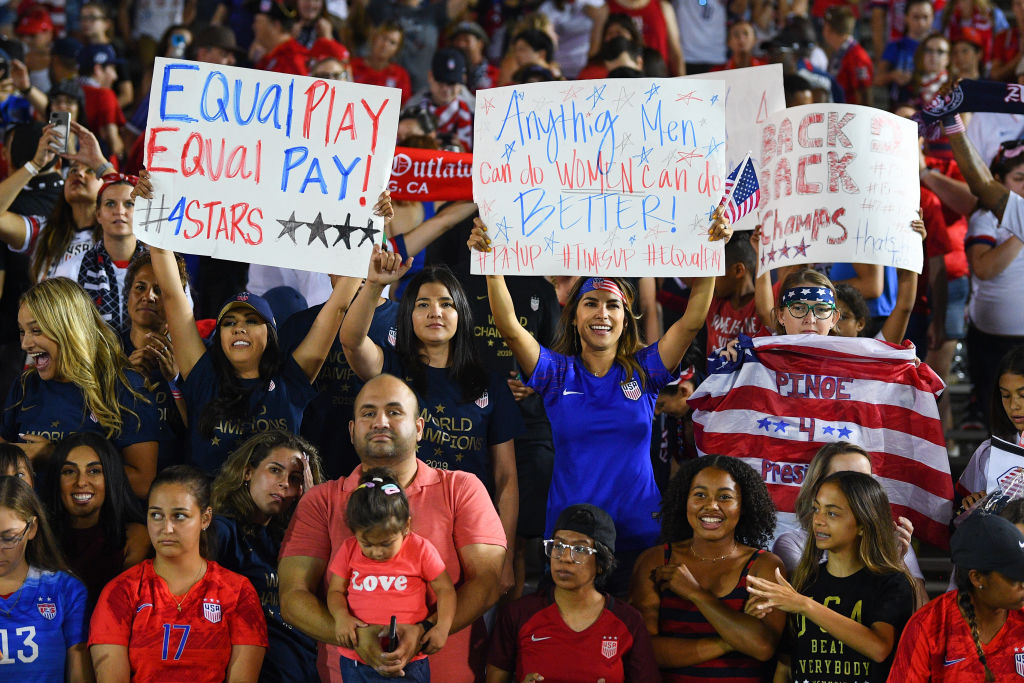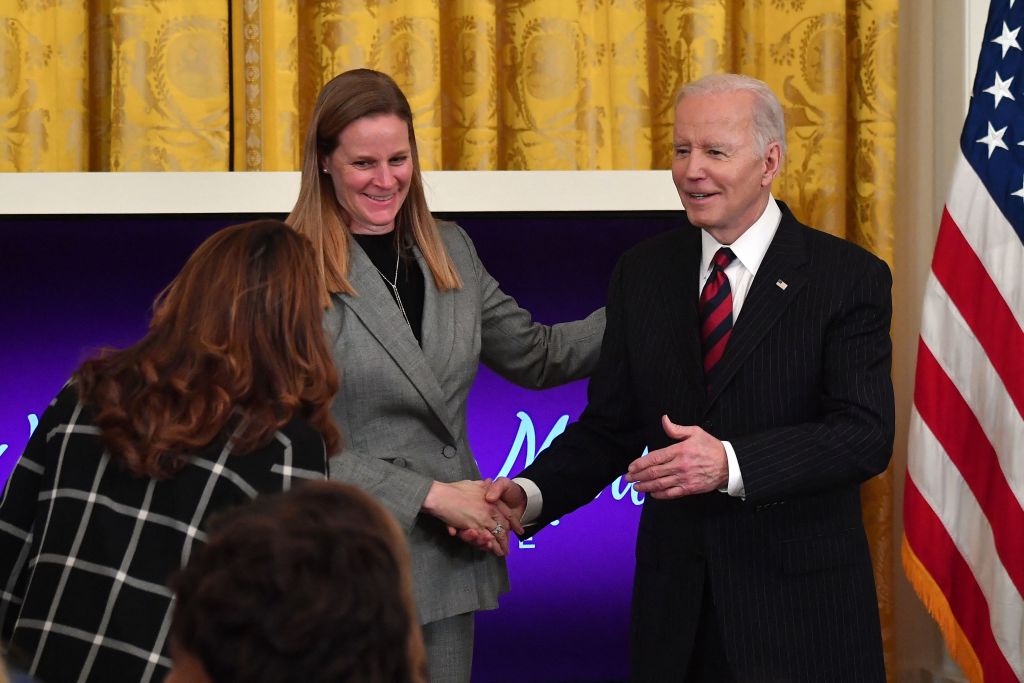
The chants followed the U.S. women’s national soccer team everywhere they went that summer three years ago, from the World Cup stadium in Lyon, France, where the team won its second straight title, to the streets of New York City, where the players were feted with a ticker-tape parade.
“Equal pay! Equal pay!”
Earlier in 2019, the U.S. women had filed a gender equity suit against their own employer. Millions rallied around their cause. But they faced a federation determined to keep the status quo—and courts can be a formidable foe.
“Equal pay! Equal pay!”
On Wednesday, they finally got their wish.
In a momentous announcement, the United States Soccer Federation, the United States Women’s National Team Players Association and the United States National Soccer Team Players Association announced that they had agreed to first-of-their-kind collective bargaining agreements (CBAs) creating true pay equity in the sport.
Appearance fees and bonuses will be equalized across teams: for example, a player who participates in an international exhibition match, or “friendly,” against a team ranked in the FIFA Top 25 will receive an $8,000 appearance fee, and a $10,000 bonus for a victory. U.S. Soccer will share a portion of its broadcast, apparel, and sponsorship revenue with the players; that pot will be divided equally between the teams. From Jan. 1, 2023 through Dec. 31, 2026, $5.06 per every ticket sold at U.S. Soccer-controlled home games will go to the players.
Read More: How Trans Sports Bans Became Part of the Conservative Movement
Most notably, the men’s and women’s teams will split FIFA World Cup prize money equally, becoming the first national teams to do so anywhere in the world. Soccer’s world governing body has notoriously awarded disparate amounts to men and women. FIFA set aside $400 million in total prize money for the 2018 men’s World Cup, including $38 million to champion side France. For the entire 2019 women’s tournament, on the other hand, just $30 million was set aside and only $4 million went to the winning United States team.
FIFA has increased the total to $440 million for the 2022 men’s World Cup; its president, Gianni Infantino, has proposed FIFA double the women’s prize money to $60 million for the 2023 Women’s World Cup. The United States, however, will pool the total prize money won by the U.S. teams in the 2022 World Cup and the 2023 World Cups, and pass 90% of the funds onto the players, to be split evenly among the men’s and women’s players. The CBAs call for a similar structure in the 2026 and 2027 World Cups, with 80% of the money to be shared evenly among men’s and women’s players.
The agreements also require U.S. Soccer to provide an equal number of charter flights to both teams, and an equal quality of venues and field playing surfaces to the men’s and women’s teams.

Soccer setting new standards for equal pay
These deals would seem to conclude six years of contention between the U.S. women’s team and U.S. Soccer.
In 2016, five players first filed a wage discrimination claim with the Equal Opportunity Employment Commission. Their fight had fits and starts. In March 2020, for example, a U.S. Soccer court filing seemed to demean female players, saying that “indisputable science” proved that the female players were inferior to men; U.S. Soccer president Carlos Cordeiro resigned in the fallout. In April 2020, a judge ruled against the women in the equal pay suit; but new U.S. Soccer president Cindy Parlow Cone, a two-time Olympic gold medalist and member of the 1999 World Cup winning U.S. women’s soccer team, signaled that the organization was willing to negotiate going forward.
The timing worked out. Cone, a woman with deep ties to the U.S. team, was now in charge, and the women’s CBA was expiring at the end of 2021. The men’s side was still seeking a new agreement: it had expired at the end of 2018. These circumstances gave all parties incentive to sit down together last fall. “For me, the turning point was when we actually got everyone in the same room together,” says Cone. “That was the first time that I really thought we could do this, because that in itself was historic.”
“We saw that there was not going to be a way forward without the equalization of World Cup prize money,” says Walker Zimmerman, a U.S. men’s national team member who also plays for Nashville SC of Major League Soccer. “There was a potential chance of making less money, no doubt about it,” says Zimmerman. “But we also believe so much in the women’s team, we believe in equal pay. And ultimately, that was a big driving force for us, to do something no other team had done before.”
Read More: How Social Media Can Tackle the Racist Abuse of Athletes
Still, Zimmerman acknowledges that the men had “difficult” talks. Did they really want to sacrifice the opportunity to pocket World Cup prize money they earned? “The hardest thing was probably the conversations about, okay, if anyone is going to do it, we have to be the group to do it,” says Zimmerman. “Because it’s so much easier in theory when you aren’t the ones on the team actually giving up something that you already expected to get.”
Sure, the higher salaries that men can earn playing for their pro club teams help offset any World Cup losses—but they could have still held out on equality. “This advancement doesn’t happen without the men championing this,” says Cone. “I don’t want that to be understated. Because they were true champions of this, and worked through this because it’s not easy to give up the money that they’re giving up.”
The deals may certainly set a new standard as national teams around the world, and across sports, negotiate for equal pay. Will, say, NBA players set aside some portion of revenues to share with their lower-paid counterparts in the WNBA? This suggestion seemed almost laughable before Wednesday. Now? It at least seems plausible.
“I don’t know that we know the full ramifications of this, in soccer, other sports, and society,” says Cone. “I don’t think we’ll fully know that for 10, 15 years.”
But there is one thing we know right now: female athletes have more reason for optimism.
More Must-Reads from TIME
- Introducing the 2024 TIME100 Next
- The Reinvention of J.D. Vance
- How to Survive Election Season Without Losing Your Mind
- Welcome to the Golden Age of Scams
- Did the Pandemic Break Our Brains?
- The Many Lives of Jack Antonoff
- 33 True Crime Documentaries That Shaped the Genre
- Why Gut Health Issues Are More Common in Women
Write to Sean Gregory at sean.gregory@time.com